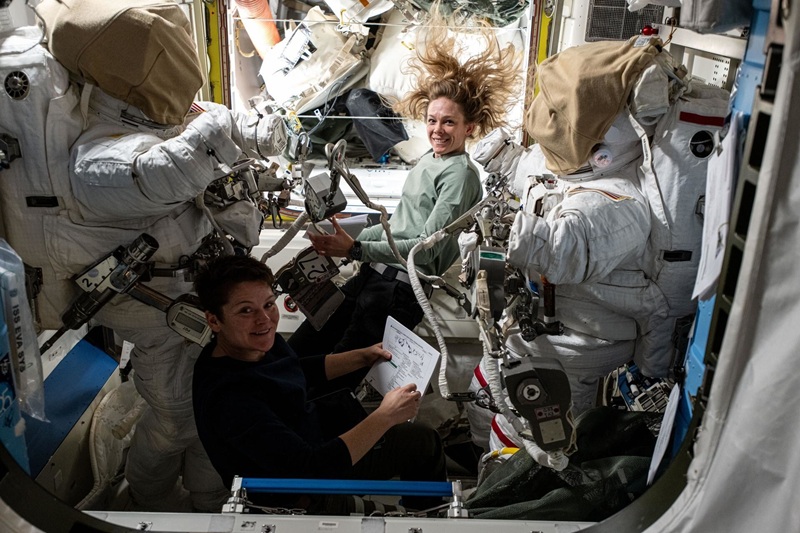A credit card-sized computer is at the heart of one of today’s most ambitious scientific quests: uncovering the faint whispers of the universe’s first stars from the serene quiet of the Moon’s far side. This miniature marvel, a single-board computer (SBC), is the centerpiece of an Indian experiment, PRATUSH (Probing ReionizATion of the Universe using Signal from Hydrogen), designed by the Raman Research Institute (RRI), Bengaluru, in collaboration with the Indian Space Research Organisation (ISRO) and backed by the Department of Science and Technology (DST), Government of India.
The Cosmic Dawn: The Universe’s Ancient Secret
The Cosmic Dawn denotes the epoch when the very first stars and galaxies illuminated the universe, drastically altering its evolution and structure. Astronomers suspect that this period, still cloaked in mystery, is crucial to understanding the universe’s journey from a sea of neutral gas to a tapestry of galaxies. The “fossil record” of this era is believed to be encoded in a faint 21-centimeter radio signal emitted by primordial hydrogen atoms. However, detecting this signature is one of the biggest challenges in cosmology—the signal is so feeble it is easily buried beneath cosmic and manmade noise.
Why Chase the Cosmic Dawn?
Unlocking the secrets of the Cosmic Dawn may answer foundational questions: How did the first stars ignite? When did the universe’s hazy fog of neutral gas give way to transparency? How were the subsequent galaxies, elements, and possibly life itself seeded? The faint hydrogen signal from this era holds the answers, but Earth’s environment—awash in radio interference—makes catching this cosmic whisper almost impossible.
Enter PRATUSH: Innovation on the Moon’s Far Side
PRATUSH aims to sidestep these challenges through an unorthodox solution: placing its ultra-sensitive radiometer—the instrument that captures celestial radio waves—on the Moon’s far side. Out there, the lunar bulk blocks out all Earthly radio emissions, creating the quietest place in the inner Solar System, ideal for such hushed investigations.
At the core of PRATUSH is its elegant design philosophy: maximum scientific punch with minimal mass, volume, and power—collectively known in the field as SWaP constraints. These are crucial in space, where every gram and watt counts. Compact, efficient components are the soul of modern deep-space exploration, and PRATUSH stands as a flagship of this ethic.
The Tiny Computer with an Outsized Role
The PRATUSH digital receiver system is anchored by a single-board computer (initially a Raspberry Pi) no larger than a credit card, yet as sophisticated in function as a traditional, much larger system. This SBC acts as PRATUSH’s “mission control,” orchestrating a precise symphony of hardware:
- It coordinates the antenna that captures faint radio waves from deep space.
- It interfaces with the analog receiver to amplify these signals.
- It controls a field programmable gate array (FPGA), a powerful processor that translates analog signals into digital fingerprints reflecting the brightness of the cosmic radio sky at different frequencies.
- It records, stores, and conducts preliminary data analysis, ensuring that valuable data is preserved and streamlined from Mbits down to manageable, highly-enriched datasets.
Why Single-Board Computers?
SBCs like the Raspberry Pi bring several advantages vital for deep-space science. They are:
- Small and lightweight, reducing launch mass and cost.
- Power-efficient, essential for battery- and solar-driven space operations.
- Highly integrated, enabling complex tasks without the need for bulky, multi-component systems.
- Flexible and programmable, supporting rapid development and adaptation.
While the laboratory prototype uses a common Raspberry Pi, the space version will rely on a computationally robust, radiation-hardened commercial or customized board capable of surviving lunar orbits.
The Radiometer: How PRATUSH Listens to the Past
The PRATUSH radiometer works through a finely tuned sequence:
- The antenna captures whispers of hydrogen’s 21-cm emissions from the sky.
- The analog receiver boosts these tiny signals, preparing them for conversion.
- The FPGA digitizes and processes the data in real time, converting analog voltages into digital numbers mapped across thousands of radio frequencies.
- The SBC oversees the entire process, ensuring high-quality, calibrated data is recorded and ready for deeper analysis—either onboard or upon return to Earth.
The key technical challenge? The hydrogen signal is millions of times fainter than the galactic and terrestrial background. Precision electronics and sophisticated calibration routines, coordinated by the SBC, are needed to filter out noise with a precision measured in millikelvins (1/1000th of a degree above absolute zero).
Laboratory Triumphs and Path to Space Deployment
In extensive laboratory experiments, the PRATUSH digital receiver system has already notched impressive milestones. Over 352 hours of continuous data collection on a controlled reference signal, it demonstrated unprecedentedly low noise—essential for isolating Cosmic Dawn’s elusive fingerprint.
Software upgrades continue to squeeze even more capability and reliability from the compact hardware suite. As PRATUSH transitions from laboratory to lunar candidate, its hardware will be ruggedized and optimized for the harsh realities of space.
Moon’s Far Side: The Ultimate Observatory
The Moon’s far side is often touted as the “radio dark” haven for astronomy. With the Earth shielded behind the lunar bulk, all sources of radio frequency interference—FM, TV, radar, even lightning—vanish. PRATUSH plans a circumlunar orbit to ensure a clear, wide-angle view of the celestial sphere, and operational protocols are being crafted to maximize data collection time during the spacecraft’s sojourn in radio silence.
Broader Scientific Impact
By catching the 21-cm hydrogen line from Cosmic Dawn, PRATUSH could validate or overturn current cosmological models:
- Unveil the timing and progression of reionization, when early stars began stripping electrons from hydrogen atoms, making the universe transparent.
- Offer new constraints on dark matter, as exotic interactions could alter the cooling and heating history revealed in the hydrogen signal.
- Shed light on how the first cosmic structures—stars, black holes, galaxies—arose and evolved.
The impact will radiate beyond astronomy, deepening our basic understanding of the cosmos and its history.
Behind the Technology: India’s Space Science Vision
The PRATUSH initiative underscores India’s growing leadership in global space science, emphasizing home-grown innovation and strategic collaboration. By leveraging agile technology—like the credit card-sized SBC—the RRI team is breaking new ground in both hardware design and scientific ambition.
Girish B. S., Research Scientist E of RRI’s Electronics Engineering Group, emphasizes the game-changing potential: “SBCs… deliver an appealing balance of size, performance, and efficiency to manage the data generated by FPGAs…”
Colleague Srivani K. S. notes, “The SBC is a critical component… selected to serve as both the master controller and data recorder.” Researchers Saurabh Singh and Mayuri S. Rao project that such technology will be “integral to payloads to detect the signal of the Cosmic Dawn from one of the quietest corners of the solar system”.
The PRATUSH Legacy: Tiny Machine, Grand Questions
PRATUSH’s success could reverberate across the scientific community. Its demonstration of lightweight, ultra-sensitive radio instrumentation, orchestrated by microcomputers, potentially rewrites how future astronomy missions are designed and deployed—not just for the Moon, but for Mars and beyond.
If this tiny computer and its array of meticulously engineered appendages achieve their mission, humanity will, for the first time, “hear” the voice of the cosmos at the dawn of time—an epoch when the universe took its first luminous breath.
From its birth in a Bengaluru lab to a silent orbital perch above the Moon, PRATUSH is a testament to how something small, smart, and locally made, can aspire to answer the universe’s oldest, and most profound, questions.





